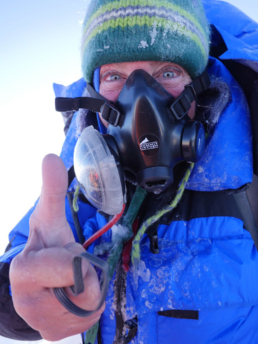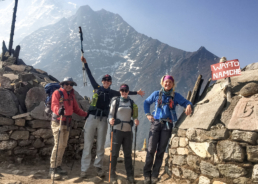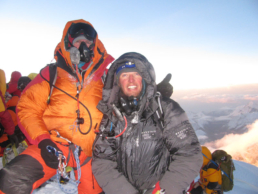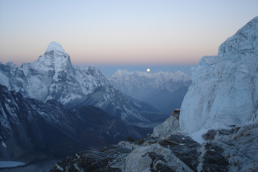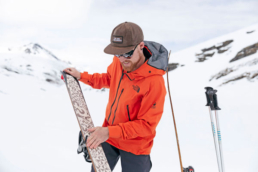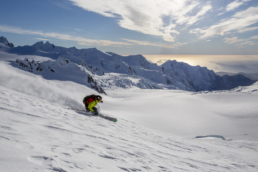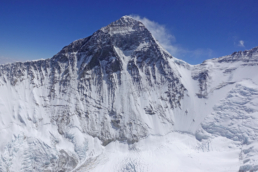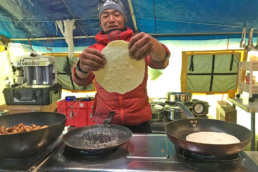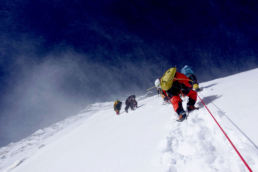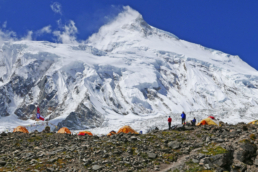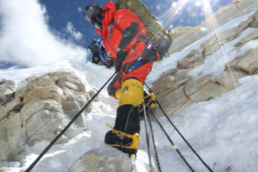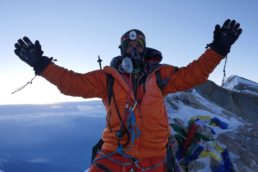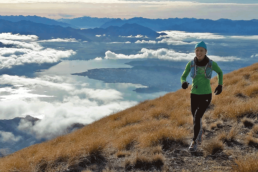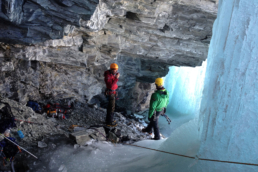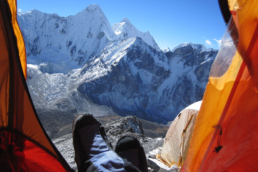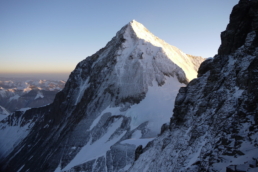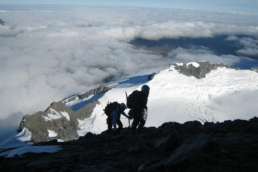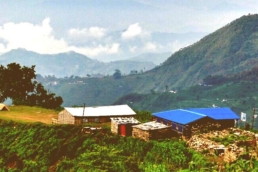Optimum Layering
Words by Guy Cotter, CEO of Adventure Consultants
Climbers all have differing views on what is the best clothing system for mountaineering. Otherwise compatible climbing partners can fall into vigorous debate when the subject of clothing comes up as each adamantly supports their own preferences over those of others. This goes well beyond individuals beating up over it, even different nations have completely different philosophies about clothing systems that seem at complete odds to each other. Most of us will vehemently oppose the concept that we may have preference towards items pushed by the equipment manufacturers and retailers in our own country or that it’s just happenstance that we like the same clothing as the local climbing heroes are wearing. This may or may not be true but if you want to raise the guile of a climber and see them go red in the face in less time than it takes Ed Viesturs to change labels then you should suggest that their decision is based on fashion and marketing rather than reason.
After the fun is over we can get to it and try to work out what is the best system for us. Everyone is different and so there is no ‘optimum’ clothing system for everybody. Some people are hot blooded and hardly wear a thing while others need a lot more to stay warm. Some people get cold feet while others suffer in their hands. It’s actually something you have to work out for yourself but it helps to have a little guidance about the concepts before you go and stretch the plastic on stuff that may well sit in your cupboard after you’ve discovered its foibles on the first trip out. A well intentioned salesperson may well be inclined to push you to upgrade to a better and warmer option when a lighter one would have been much more appropriate for the activities you will actually be using it for.
The most important factor to consider in your clothing system is not whether the garment will make you warmer or cooler; it is that you can use it in conjunction with your other layers to manage your thermal regulation so that at all times you are neither too hot or too cold. When you couple that with the need to carry the kit around with you, the equation gets a whole lot more difficult.
The reality is that you are going to heat up and cool down as you exercise and slow down or stop. Heavy garments that are designed for the coldest part of the day are going to be useless once you get started and get a sweat on. You want to build up a ‘layering system’ that allows you to be comfortable all day and night. Comfort is relative, if you want complete comfort at all times your wardrobe will be too big, sorry, but you’re going to have to suffer sometimes. You find with experience that you (mostly) need a lot less gear than you think you do and the acid test is that when it’s at its coldest, you should have ALL your kit on and be just warm enough. If you’ve got any remaining clothing in your pack you’ve got too much. Same applies at night. If your sleeping bag is too warm you’ll have to take all your clothes off to sleep whereas the best weight bag is the one you are comfortable when wearing the bulk of your clothing (okay, we’ll let you off from having to wear your shell clothing and boots in the bag!).
So, now we have established the baseline, what layers do you wear?
The under layer is very important as this must wick moisture away and remain comfortable at all times. Get a long sleeved and zip necked thermal shirt with a collar to protect your neck. No T-shirt tops unless you want to burn your neck off in the sunlight or freeze it off when it’s cold. If you are going to a very cold climate you can wear two zip necked tops as the comparative warmth vs weight they provide is amazing. Long johns (long underwear) – same applies but in general you would only want one layer if you use one at all. I never wear long johns, I am warm enough in my climbing pants and I find long johns to be a pain when I get hot because I can’t take them off.
Over your under layer(s) you want a nice thermal top. I use a very light one (at present my favourite is a zip up Salomon Acti light layer) and if necessary another fleece layer for really cold climates. Most guides these days are substituting the fleece for a windshirt instead such as the Marmot Driclime windshirt. These are a light microfibre layer of insulation covered by a windproof nylon. They are extremely light and seem to offer at least as much warmth as a fleece especially in the wind.
Sadly, there doesn’t seem to be a trousers version of the same thing so you are best to use schoeller climbing pants which offer some thermal qualities depending on what weight material the pants you purchase have. I’ve got thicker ones for colder temps and some nice North Face light ones for warmer climbs.
Over all this you have the shell gear. Now this is an area of clothing technology that is moving forwards at a great speed. There are several reputable fabrics that are both waterproof and breathable (to various degrees of success) but on the whole the top clothing brands are going to have good materials in the top end products. These days you can buy lightweight jacket and pants and still retain keeping the water out. Make sure they are full zips on the jacket and full leg zips in the pants to enable you increased ventilation and temperature control. I’ll use the above layering system until about -10ºC if I am moving and not stopping for too long. If I am going to be hunkered down on belays in the shade I’ll throw in a light down jacket to use at belays and when seconding a pitch. Usually warmed by the top of the pitch you can hand the puffer to your partner who has now cooled down sufficiently they are happy to have their turn being toasty.
When it gets real cold, like Antarctic or Himalayan cold, I’ll take down pants and jacket and put these over the top of the previous layers, yep even over the shell clothing on a windy day to keep the warmth in. I’ve not yet been in a situation where a down suit would be preferable to down jacket and pants. They are such overkill unless you have a train of willing Sherpas to carry your wardrobe for you. People with down suits also need to have a down jacket with them to put on when they stop for a break. You can’t exactly get the down suit out and put it on for a 5 minute breather can you? And the things take up 3/4s of a pack load and are really heavy to boot. Take the jacket and pants combo and you all of a sudden have heaps of versatility. Put the lot on when it’s cold then zip the pants off when you heat up (I can do this while still walking to save time) and later the jacket also.
Stop for a rest and out comes the down jacket to keep your temperature balanced while you rest. All the while you are not carrying around some huge Michelin Man suit that you only use for one day of the entire expedition. It seems weird but down suits are so entrenched in climbing wardrobe psyche that people just don’t stop to think about their systems or where they can shave some weight and increase versatility.
Just to finish on the down gear quandary, and to prove I’m not against them per se, if I was climbing Everest from the north side or climbing Everest without oxygen or winter climbing in the Himalaya I’d definitely want a down suit!
Related Posts
November 27, 2020
How to Climb Your First 6,000m Peak
March 19, 2020
Gear Review: The North Face Futurelight Jacket
October 7, 2019
Mind Over Mountains
September 29, 2019
EXPLORING THE UPPER MUSTANG
August 26, 2019
The Call of the Mountains
August 4, 2019
Glacier Ski Touring
May 30, 2019
Fixing Everest – Part 2
May 29, 2019
Everest Base Camp Kitchen
April 30, 2019
Steve Moffat – A life guiding
October 8, 2018
Magnificent Mera
September 14, 2018
Welcome to The Geo Dome
July 13, 2018
Everest Insider Series: James Perry
July 5, 2018
Everest Insider Series : Anthea Fisher
June 20, 2018
Everest Insider Series : Doctor Sophie Wallace
May 9, 2018
Mettle and Grit High on Nuptse
February 22, 2018
Define Failure
November 8, 2017
The North Face Adventure Grant 2018
September 10, 2017
Fit To Trek
August 14, 2017
Boots For The Mountains
July 28, 2017
The North Face Inferno Sleeping Bag
May 30, 2017
Fit To Climb
March 27, 2017
An Ice Climbing Adventure
March 1, 2017
The Go Big, Go High Adventure Calendar
February 16, 2017
Claiming False Summits
November 16, 2016
So They Can
November 9, 2016
Return to Tititea
November 3, 2016

